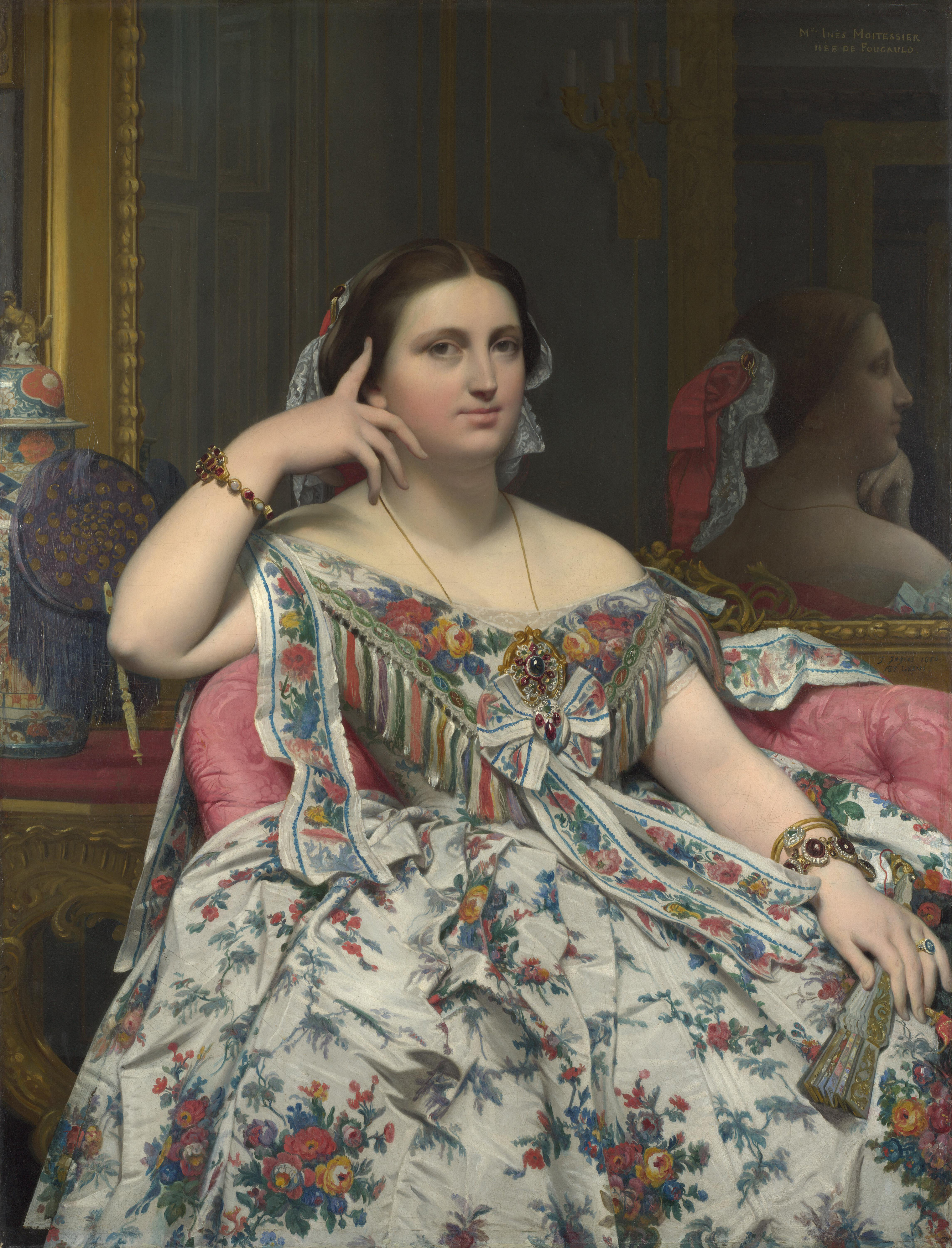
Below are two descriptions by the same writer (Robert Rosenblum (1927-2006)) about the same painting (J.A.D. Ingres’s Madame Moitessier in National Gallery, London). The first description is a complicated guided tour through the picture and the second is concerned with the art historical context. I will be visiting London and the National Gallery in November, so I want to familiarize myself with some of the paintings.
At first, the dense luxury of Second Empire costume and décor dazzles the eye, above all in the cornucopian outburst of printed roses that spills across the silk dress, and then in the compounding of this splendor through the tufted damask of the sofa, the amethyst bracelet, the glimpse of a fan and oriental vase on the Rococo console, the gilded ornament of the mirror frame. Yet ultimately this nouveau riche opulence is subordinated to a strange silence and calm that completely contradict the portrait’s initial assault upon our senses of sight and touch. For one, the mirror image that occupies the upper half of the painting provides a dull and hazy reflection that challenges the vivid clarity of the material world below . . ..Yet this dialogue between a real world and its dreamlike, immaterial reflection is not merely visual; it also involves the personality of the sitter . . .. A pampered creature of flesh as plump and cushioned as the sofa beneath her, she nevertheless becomes an enigmatic presence . . . a modern oracle presiding in the padded comfort of a mid-nineteenth-century drawing room. Her right hand, as pliable as a starfish, is posed weightlessly against her cheek and temple, as if enforcing her uncommon powers of wisdom and concentration; and her eyes, compressed forward with the total volume of the head, appear to observe us both directly and obliquely. And to enrich even more this aura of a tangible yet remote being, Ingres has cast her reflection in pure profile, a ghostly sibyl who gazes as sightlessly as a marble statue into an invisible world.1The painting can be studied in detail with zoom and other tools on The National Gallery's excellent home page: http://www.nationalgallery.org.uk/paintings/jean-auguste-dominique-ingres-madame-moitessier.
[V]iewed through the lenses of period style, Ingres's portrait . . . make[s] us wallow in a plum-pudding richness of textures, materials, patterns that aspire to an airless density. Mme. Moitessier, of course, is a model of cool propriety in her wealthy Paris interior, and her posture alludes to classical prototypes; but she and Ingres clearly revel in her sumptuous inventory of possessions: the gilt console, the tufted damask sofa, the Chinese vase, the peacock-feathered fan, the bracelets and brooch with their enormous gems, and above all the full cascade of the rose-patterned silk dress with its embellishments of fringes and ribbons. But Ingres . . . transcends the Second Empire period look through his own genius, which here ennobles the sitter not only with the abstract, yet sensual linear circuits that command the undulant shapes of fingers, shoulders, and arms, but through an adaptation of the common antique pose of contemplative head-on-hand.2
1 Robert Rosenblum, Jean-Auguste-Dominique Ingres (New York: Harry N. Abrams, 1967), 164.
2 Robert Rosenblum and H.W. Janson, 19th-Century Art, rev. ed (Upper Saddle River, NJ: Pearson/Prentice Hall, 2005), 249-50.
No comments:
Post a Comment